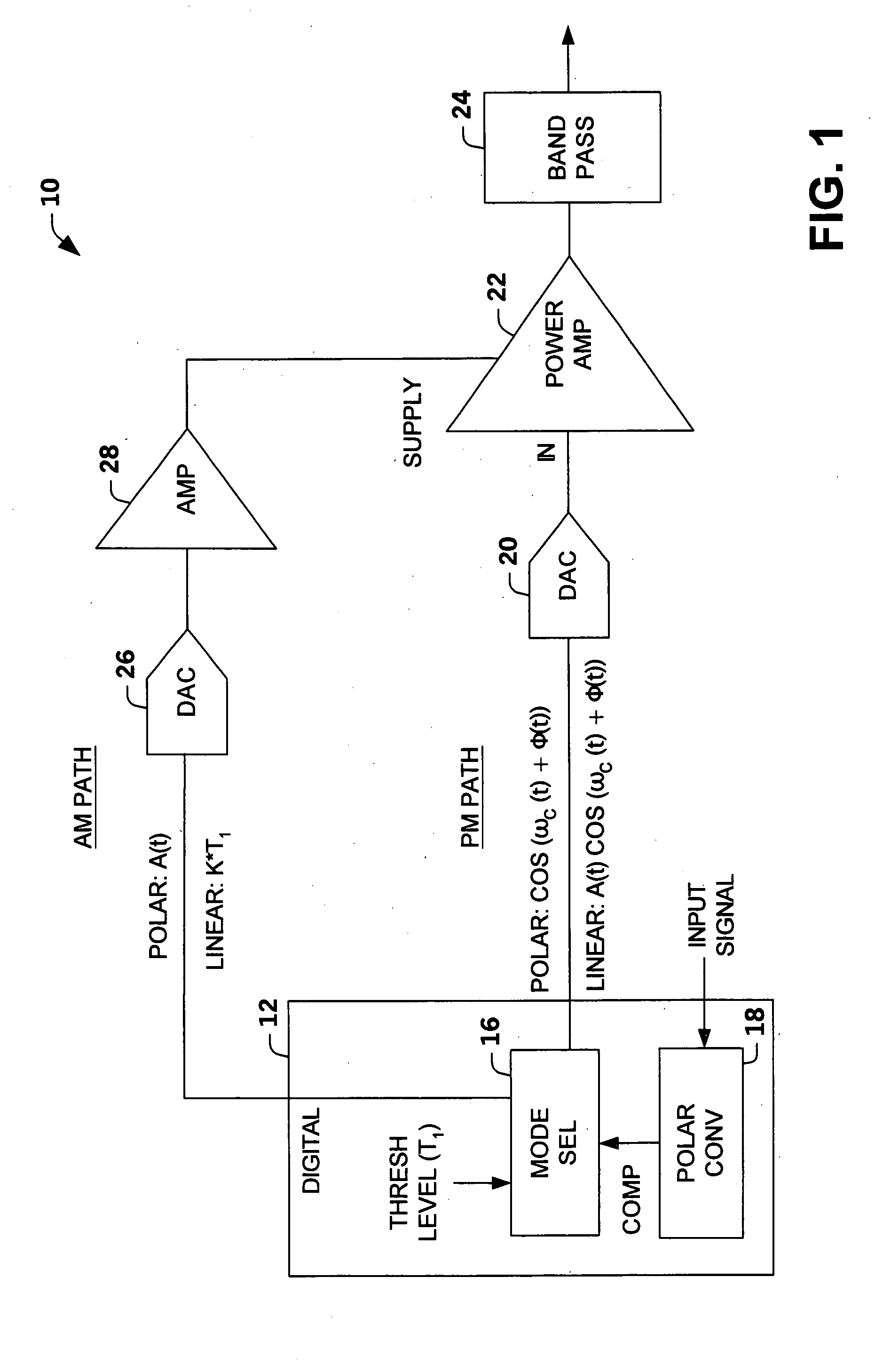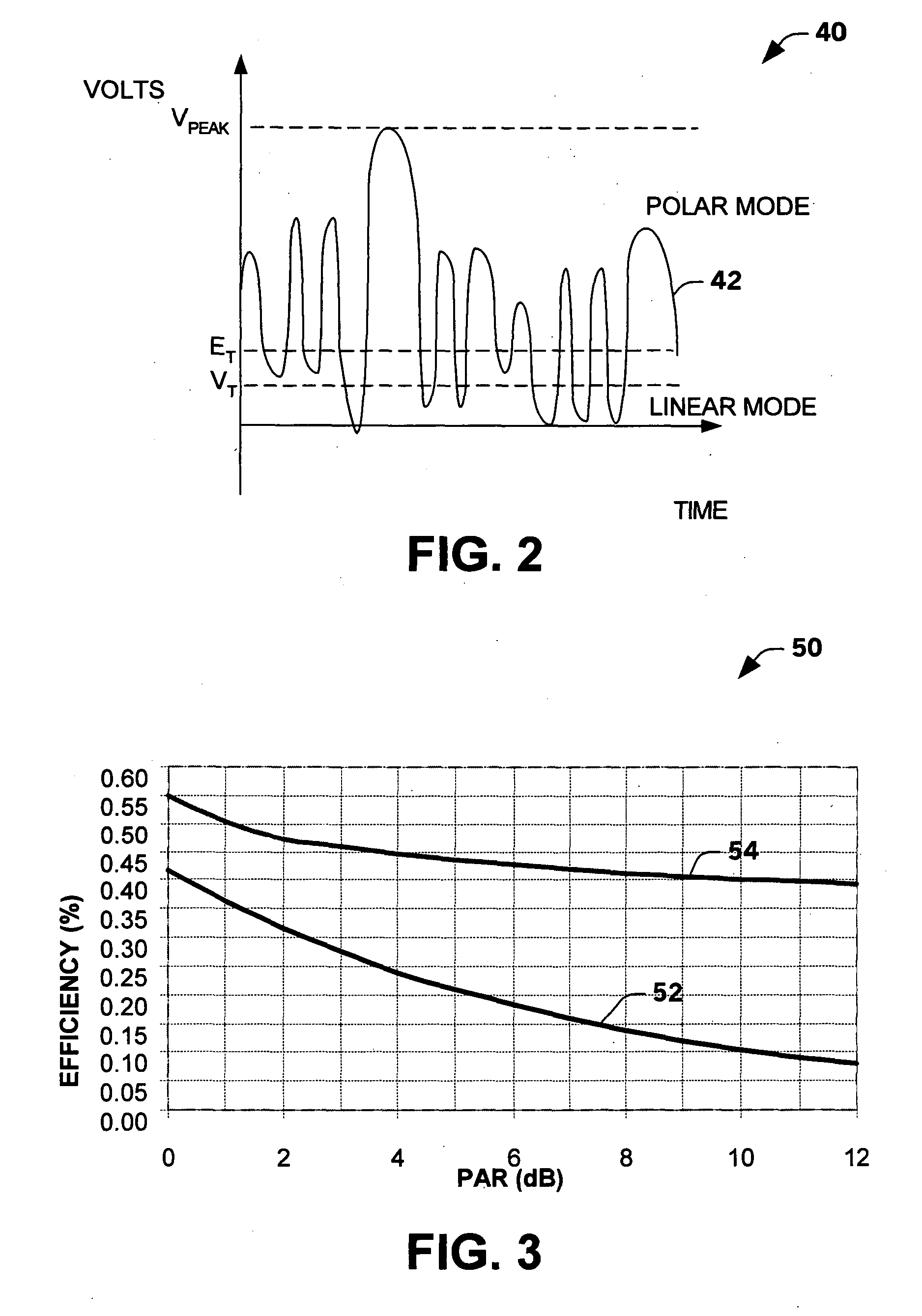Polar and linear amplifier system
- Summary
- Abstract
- Description
- Claims
- Application Information
AI Technical Summary
Benefits of technology
Problems solved by technology
Method used
Image
Examples
Embodiment Construction
[0022] The present invention relates to an amplifier system that switches modes of operation based on a characteristic of an input signal relative to a threshold level (e.g., envelope amplitude level, digital count representation of signal level, power amplifier power level). The amplifier system operates as a polar amplifier system in a polar mode, and operates as a linear amplifier system (e.g., Class A, A / B, or B) in a linear mode. The amplifier system integrates digital functions with analog components to achieve improved linearity and size reduction of power amplifiers. A mode selector controls whether polar components ("polar mode") of the signal are sent to a power amplifier or whether the composite signal is amplified ("linear mode"). The amplifier system can employ a power amplifier that maintains a constant class configuration. However, a power amplifier that maintains a constant class configuration is not required.
[0023] The present invention overcomes one or more known o...
PUM
 Login to View More
Login to View More Abstract
Description
Claims
Application Information
 Login to View More
Login to View More - R&D
- Intellectual Property
- Life Sciences
- Materials
- Tech Scout
- Unparalleled Data Quality
- Higher Quality Content
- 60% Fewer Hallucinations
Browse by: Latest US Patents, China's latest patents, Technical Efficacy Thesaurus, Application Domain, Technology Topic, Popular Technical Reports.
© 2025 PatSnap. All rights reserved.Legal|Privacy policy|Modern Slavery Act Transparency Statement|Sitemap|About US| Contact US: help@patsnap.com



